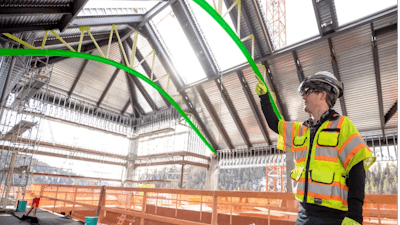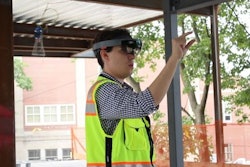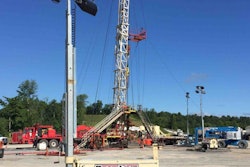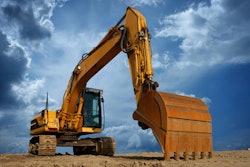
The architecture, engineering, and construction industry (AEC) is not a sector known to adopt new technologies quickly. When change does come, it moves at a glacial pace. One area where innovation has lagged is technology enhancing design, quality control or project management. Some of these tools, like Microsoft Hololens and BIM, have been around for several years but most construction companies used them sparingly, if at all. The COVID-19 pandemic has changed this on construction sites across the globe.
When contractors were allowed to return to job sites after the initial shut-downs, companies had to impose strict guidelines on who could enter a job site and how they could work there. New protective measures designed to keep workers safe and prevent outbreaks discouraged or prevented clients from touring construction sites in person. This sent many construction firms scrambling to find ways to show clients in real-time, or close to real-time, progress on their projects.
There has been a surge in use of remotely piloted drones, augmented reality (AR), mixed reality (MR), virtual reality (VR) technology, and building information modeling (BIM) systems. These established and cutting edge technologies are facilitating a digital transformation that will bring a lasting change to construction.
Flying high with drones
Because of travel restrictions, many companies use drones to give clients a bird's eye view of their projects. Drones can fly over the site and provide a time-lapse image, allowing the client to see progress and the number of workers on-site. And, since this technology is relatively inexpensive, a flyover can be done multiple times per week to satisfy a client's needs. Drones can also be used as part of the final inspection process for hard-to-reach or dangerous areas on structures.
Breaking down reality
AR, VR, and MR are similar and overlapping, but there are some differences. Here is a quick breakdown of what each can do:
- AR is when virtual elements are layered over a real-world environment via screens (computer, smartphone) or glasses (Google Glass). This technology has been around for a few years and is used by everyone, from retailers to social media platforms like Snapchat.
- VR is a fully digital environment that requires a headset and special hand controllers for complete immersion. It has been around since the 1990s and has grown in sophistication. It can be used for many different applications, like allowing a client to virtually walk through a scaled digital mock-up of a building.
- MR is a combination of AR and VR. Like AR, it can overlay digital objects over the real world, allowing the operator to manipulate the virtual object like VR. It is a newer development with many possible applications and is used by Microsoft's HoloLens.
What is BIM?
Building Information Modeling is a technology that traces its roots back to the 1970s, but has reached a level of sophistication to become a practical and powerful tool throughout the building process and even its lifecycle. During the planning stage, digital mock-ups of a new building can be created that offer many advantages. It gives the client the ability to do a virtual walk-through of the project to see how it addresses their vision and needs, reducing revisions once construction begins. But BIM has gone well beyond just 3D modelling and can now incorporate a significant amount of critical data as it has evolved. This can include:
- Scheduling information to ensure the right trades are given access to the site at the right time and that the project is progressing correctly;
- Costing can be built into the modelling to ensure accuracy and can be kept up to date in real-time;
- AEC firms can include information on the facility for the finished product. It can consist of maintenance information and schedules, installation dates, and details on configuring equipment to optimize performance.
These features can help ensure a project is completed on time and budget and give the owner all the information needed to ensure all systems last their projected life cycles.
A view to productivity
One final technology that ties AR, VR, MR, and BIM together is the Microsoft HoloLens. These smart glasses have many applications that can support a project. When tied in with a BIM system, someone could walk through a partially completed facility, and the HoloLens can automatically capture all sorts of data in real-time. For example, it can help with invoicing, calculate the percentage of the project that is complete, and assist project managers in keeping the operation running on time and on budget.
Project managers can also use HoloLens for live walk-throughs with remote clients. By logging into a secure connection, the client can see the progress of the build plus many different data points. They would also communicate with the manager to see specific parts of the facility under construction. This saves clients time and potentially money if they are based a distance from where the project is being built.
What does the future hold?
Technologies that are revolutionizing other industries have only just begun being used in the AEC sector include artificial intelligence (AI) and machine learning (ML). There are several practical applications for them, especially when it comes to generating estimates for projects. For example, an AEC can feed the system about 20% of the information on a project, and the AI could calculate the remaining 80%. And AI is already proving useful for analyzing project-performance data to predict delays or cost overruns, and safety data to produce early warnings of elevated risk of work-site injuries.
Finally, AI is being used to control self-driving equipment to improve efficiencies. For example, the AI connected to heavy equipment like an automated grader using GPS and lasers, where it could level the ground to very high tolerance and precision, resulting in super-flat floors. This could reduce the amount of concrete needed to build foundations.
Building better
When COVID-19 hit North America, it changed the way many AECs operated. Not only were most client meetings being held virtually, but it forced these companies to embrace new technologies to provide a high level of service. Many of these technologies positively impact numerous projects by ensuring they are appropriately costed, being built to the correct specifications, and progressing at the proper pace. As they continue to be refined, there will likely be significant advancements, which will help companies remain cost-effective and profitable.




















